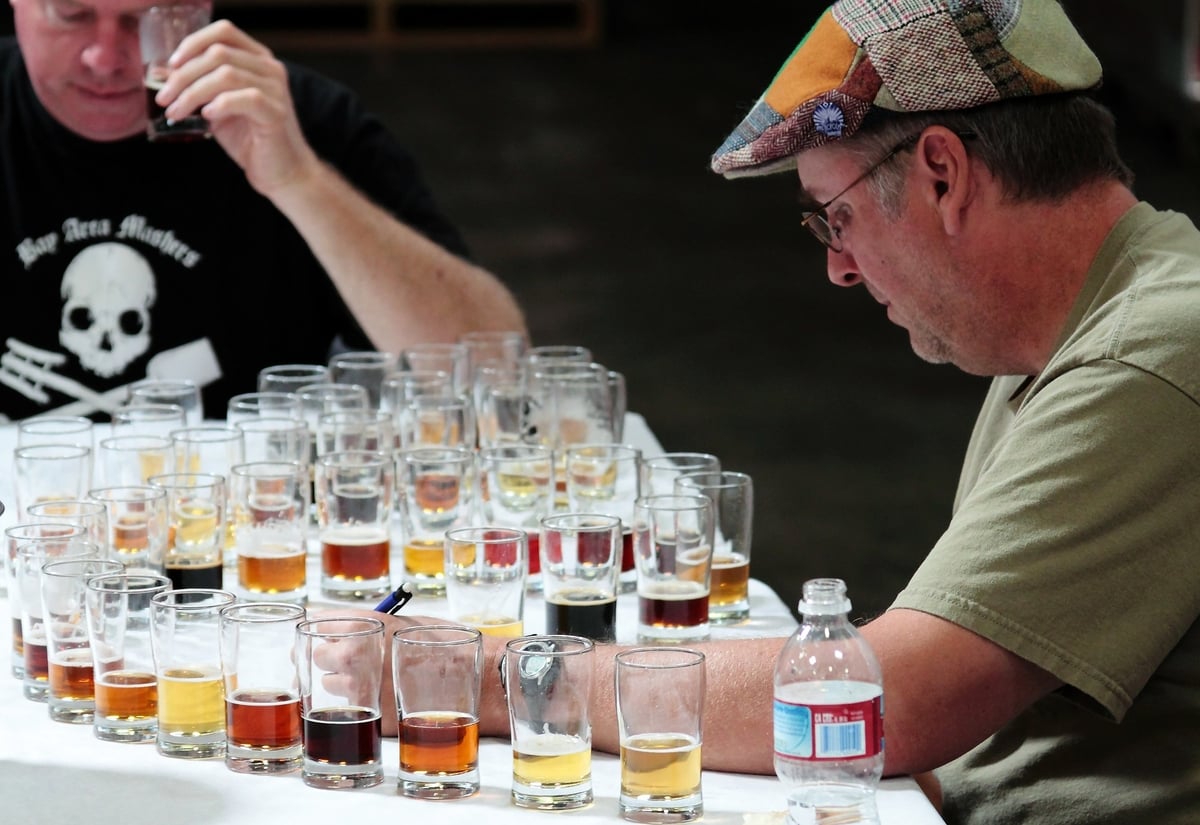Start 14-Day Trial Subscription
*No credit card required

Tertiary Beer Businesses Are Booming
Speculation about the craft brewing industry’s inevitable demise has been a real nucleation point for some people, but I’m here to say that this talk is mostly hot air. There are tons of metrics that point to continued growth and/or stability within craft despite the proverbial bursting of the bubble, and as we have seen, craft sales and production were up in 2017, though overall beer sales trended downward. Today, we’ll use a broader, more generalized gauge of success, but one that is arguably more convincing – looking at the craft brewing industry in terms of it being an ecosystem of tertiary beer businesses.
An ecosystem is generally considered healthy when it displays these three attributes: productivity, resilience and diversity, all of which are interdependent.
If an ecosystem is out of balance or unhealthy, the organisms that rely upon it will struggle to survive. This holds true from a beer-brewing perspective – there are a million ways to spoil a batch of beer. Perhaps it's too hot for the yeast to survive, or an invasive species finds its way into the fermentation tanks and upsets the balance; but this maxim is also true of the craft beer industry itself, and the innumerable tertiary beer businesses that have sprung up around it. Think beer delivery services, online beer marketplaces, homebrew shops and so on.
The health of these businesses acts as a barometer for the health of the entire craft beer industry and serves as an indicator of the public's interest level in craft beer. Though not infallible, it's generally safe to assume that if a custom glassware company is selling a lot of IPA- and stout-specific glasses, then the beers that will fill them are selling as well. To put it another way, if brewing companies are the “Great Beerier Reef,” tertiary beer businesses are the clownfish and mantis shrimp that rely on it to survive. Let’s take a look at some of these tertiary entities and see what they can tell us.

The Techno-Beer Businesses
Technology poses near-unlimited options for the future of craft beer. Looming largest are app-based services, which have found ways to solve problems or capitalize on the desires of curious drinkers. Successful models include “beer subscription” services like Tavour, which offer carefully curated selections of rare beers for the subscriber’s perusal in a streamlined format. We also have companies like Drizly, a leader in beer delivery now operating in over 100 U.S. cities and more in Canada and Europe, and which is currently valued at $17 million.
Needless to say, there are services such as Untappd, which currently serves over 5 million users, and is slated to expand to over 100 employees by the end of the year. The catalyst behind this company’s growth is its “Untappd for Business” software, now used by more than 10,000 retailers, including Target and Buffalo Wild Wings. This model shows that beer technology services can be monetized, but more importantly, it indicates the level at which craft beer interest and sales have infiltrated the mainstream.
Photo Courtesy Instagram/Taco Mac

Educational, Informational and Experiential Businesses
Beer education is more legitimate than ever. Whether for the novice or the connoisseur, there are options that lead to more jobs within tertiary beer businesses. It goes without saying that beer journalism and media have a life of their own, but we now live in an era where beer knowledge can be institutionalized, certified and accredited. You can enroll at a public university like Oregon State and get your B.S. in Fermentation Sciences or take a 10-month certificate program covering biochemistry, microbiology, technology and the business of craft brewing.
We also have the Beer Judge Certification Program and the Cicerone Certification Program, which help us become better tasters, servers and enjoyers of beer. With the knowledge gained through any of these channels, beer education and evangelism takes on a fractal, exponential kind of energy. Some might say we have a reached a point where interest in beer is self-sustaining.
Beer tourism has also skyrocketed, another indicator of a healthy level of interest and enthusiasm in all things beer. In 2014, it was estimated by the Brewers Association that over 10 million people visited a microbrewery. We have “destination breweries” which attract drinkers from around the world, and we have “beer cities” like Asheville or Grand Rapids, which have undergone substantial economic shifts based solely on the impact of craft beer business and tourism.
Within these cities, it’s not out of place to see beer tour guides, beer buses or even beer bicycles, pedaled in tandem by the bike and the beer-curious.
The underlying thread here is that these jobs simply wouldn’t exist if there wasn’t an abundance of interest in craft beer that people were willing to back up with their wallets. So while shifts in how the craft beer industry fundamentally operates may put a scare into some, the soil is as fertile as ever.

The Restaurant and Retail Businesses
Restaurants have served beer for eons, but craft’s acceptance on a mainstream, TGI Fridays-level is relatively recent. Even more recent is the advent of craft beer-specific bars, chains and gastropubs. Flying Saucer, Gordon Biersch and World of Beer are proof of the beer-centric chain model, having established themselves on regional and national scales. Further, we have smaller retail players like growler shops (which are a subculture in their own right), homebrew shops, which sell both ingredients and the finished product, and hybrid models such as Truck & Tap, a bar in Woodstock, Georgia, that focuses on craft beer and brings in a revolving array of food trucks to nourish its patrons.
Within these environments we find opportunities for more tertiary beer businesses to emerge. An interesting case study can be found with Knotty Pretzels, which established itself largely through savvy product sampling. Knotty Pretzels helped grow its brand by offering free samples at homebrew shops, catching its target audience at precisely the right time. Now, those same samples can be found in Whole Foods, along with entire end-caps devoted to the product.
Photo Courtesy Four Peaks Brewing Co.
The Numbers
According to a 2017 report from the National Beer Wholesalers Association, each job in the brewing industry (producer or importer) creates 33 additional full-time jobs related to beer and brewing. About half of those are retail jobs, with the remainder being split between farming, manufacturing and wholesaling. Altogether, the entire beer industry, big beer included, accounts for more than 2.23 million jobs.
Of these 2.23 million, about 1.6 million are comprised of retail, wholesale, supplier or brewing jobs. The other roughly 600,000 are categorized as “Induced” jobs, or jobs created for tertiary beer businesses to support the rest of the beer industry or to capitalize on the market it creates. This significant chunk would likely not exist without a healthy, functioning brewing industry. In other words, our beer ecosystem is abundant, and thriving enough to generate ancillary, “bonus” jobs.
Here’s another metaphorical indicator of a healthy industry: the legislative “habitat” for our brewing ecosystem is trending favorably. As beer culture continues to weave its way further into the fabric of our society and lobbyists help decisionmakers see reason, a once-harsh brewing climate is now mellowing and promoting growth. Taproom sales are now the norm and the icy claws of the taxman are relinquishing their grip.
What’s the big takeaway here?
The craft beer ecosystem is teeming with life. From the fertile soil of beer interest has come a slew of producers, both big fish and microplankton, which in turn provide nourishment to a range of other species in the capitalistic food chain. For those looking to take a bite out of this industry, think outside of the box. Just as in nature, those who survive are the ones who devise new systems, defenses and means of nutrient extraction. Competition is strong, but there are new and relatively unexplored angles with which you might breathe new life into the so-called bubble or enrich the soil.



